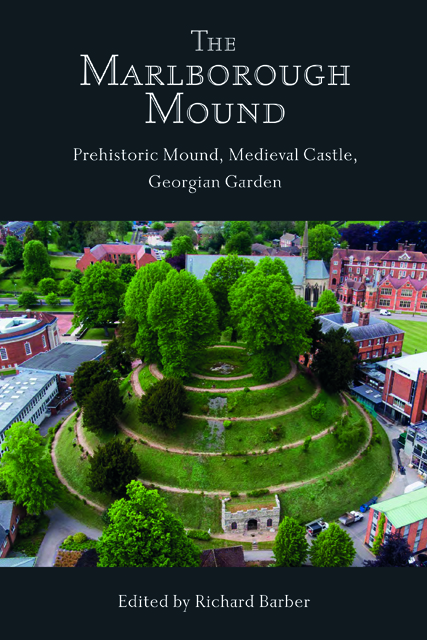Book contents
- Frontmatter
- Contents
- List of Figures
- Acknowledgements
- Preface
- 1 ‘One remarkable earthen-work’: The Neolithic Origins of the Marlborough Mound
- Afterword: The Round Mounds Project
- 2 Castles and the Landscape of Norman Wessex, c. 1066–1154
- 3 Marlborough Castle in the Middle Ages
- 4 The Mound as a Garden Feature
- Epilogue: The Marlborough Mound Trust
- A Inquisition into the State of Marlborough Castle, 11 September 1327
- B Castellum Merlebergensis, by H. C. Brentnall, F.S.A.
- C Constables of Marlborough Castle
- D Marlborough Castle: Archaeological Findings for the Medieval Period
- Bibliography
- Notes
- Contributors
- Index
4 - The Mound as a Garden Feature
Published online by Cambridge University Press: 11 January 2023
- Frontmatter
- Contents
- List of Figures
- Acknowledgements
- Preface
- 1 ‘One remarkable earthen-work’: The Neolithic Origins of the Marlborough Mound
- Afterword: The Round Mounds Project
- 2 Castles and the Landscape of Norman Wessex, c. 1066–1154
- 3 Marlborough Castle in the Middle Ages
- 4 The Mound as a Garden Feature
- Epilogue: The Marlborough Mound Trust
- A Inquisition into the State of Marlborough Castle, 11 September 1327
- B Castellum Merlebergensis, by H. C. Brentnall, F.S.A.
- C Constables of Marlborough Castle
- D Marlborough Castle: Archaeological Findings for the Medieval Period
- Bibliography
- Notes
- Contributors
- Index
Summary
The Crown’s grant of Marlborough Castle to Edward Seymour, Protector Somerset during the reign of Edward VI, and its subsequent restoration to the family after his execution and attainder, led his successors to develop the site as a country residence. The castle had already fallen into disrepair by the late fourteenth century and was in ruins when John Leland came to Marlborough in the mid-1540s. The sheer bulk and prominence of the Mound, however, meant it inevitable that it would become a garden feature.
The artificial hill, either specially created or utilising an existing feature as at Marlborough, provided an elevated position from which to view the garden and look out upon other surroundings. Although partly influenced by the viewing platforms and low mounds in some late medieval gardens, advances in military architecture and engineering were undoubtedly a major factor in the design and development of later, more monumental examples, together with related earthworks like garden terraces.
Mounts (montagnola) or ‘little mountains’ (montagnette) of natural rugged appearance or with spiral paths winding around smooth sides were introduced into Italian Renaissance gardens from at least the mid-fifteenth century onwards. The fashion had spread to England within a century. In 1533–35, for example, Henry VIII buried the basement of an elaborate banqueting house within a specially constructed mound in one of the gardens at Hampton Court Palace. The main doorway was reached by means of a spiral path lined by rosemary and a series of heraldic beasts mounted upon painted poles. At about the same time, John Leland, visiting Wressle Castle in East Yorkshire, described two mounts in the orchards there that were ‘writhen about with degrees like turninges of cokilshilles, to cum to the top without payn’.
The attraction of the mount as a vantage point, either with a deliberately built belvedere from which to look outwards or with the summit left bare yet still affording a prospect, was subsequently developed in Elizabethan times. Whilst usually circular in plan, such features might also be square or pyramidal with stepped sides needing stairs for ascent rather than the more usual spiral path. Both types are still to be found in the earthwork remains of the gardens that Sir Thomas Tresham laid out at Lyveden in Northamptonshire between 1594 and his death in 1605, when work stopped.
- Type
- Chapter
- Information
- The Marlborough MoundPrehistoric Mound, Medieval Castle, Georgian Garden, pp. 109 - 130Publisher: Boydell & BrewerPrint publication year: 2022



